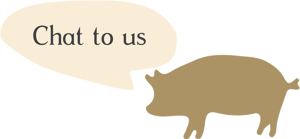



All of our kitchens love to make the most of wild seasonal produce. Over the years, we’ve built relationships with a network of foragers who bring us the best goodies hiding on our doorstep. These picks are from Peter, our master forager at THE PIG in the New Forest.
September
Sloe Berries will be ripe for picking to make sloe gin, jams & jellies.
Rosehips are rich in Vitamin C and traditionally used to make rosehip syrup.
Beefsteak Fungus are much more beautiful than their name would have you believe – they’re bright red, edible mushrooms that look like a delicious little cut of meat.
October
Ceps also known as “Penny Buns” are one of the most highly regarded of all wild mushrooms.
They often grow near oak, beech, birch, pine, and spruce trees in the forest.
Horn Of Plenty is a very good and safe edible mushroom. It’s also known as trompette de la mort – literally “trumpet of death” due to its black trumpet shape and that it appears around Halloween.
Hen of the Woods is another delicious large wild mushroom that appears at the base of oak trees.
November
Cauliflower Fungus looks like a (you guessed it) cauliflower. This tasty wild mushroom appears at the base of pine & fir trees.
Winter Chanterelles is a delicious, frost-resistant wild mushroom. They tend to grow in small groups, and you’ll find them in woodlands.
Hedgehog Fungi has “spines” rather than gills – hence its common name. They’re great in sauces.
December
Pennywort is a crunchy and succulent wild green leaf about the size of an old penny, perfect for making fresh winter salads.
Horseradish Root is in abundance and can be used in the same way as cultivated horseradish.
Hairy Bittercress is not hairy or bitter! It tastes a little like watercress and will give some lovely variety to salad side dishes.
Got a taste for the wild? This season, join our team at THE PIG-at Bridge Place and wild food expert Miles Irving, for a special woodland foraging experience followed by a warming, locally gathered feast in the heart of nature over at our Kentish PIG. You’ll learn all about how and why we’re obsessed with homegrown, wild ingredients to make our signature dishes.

